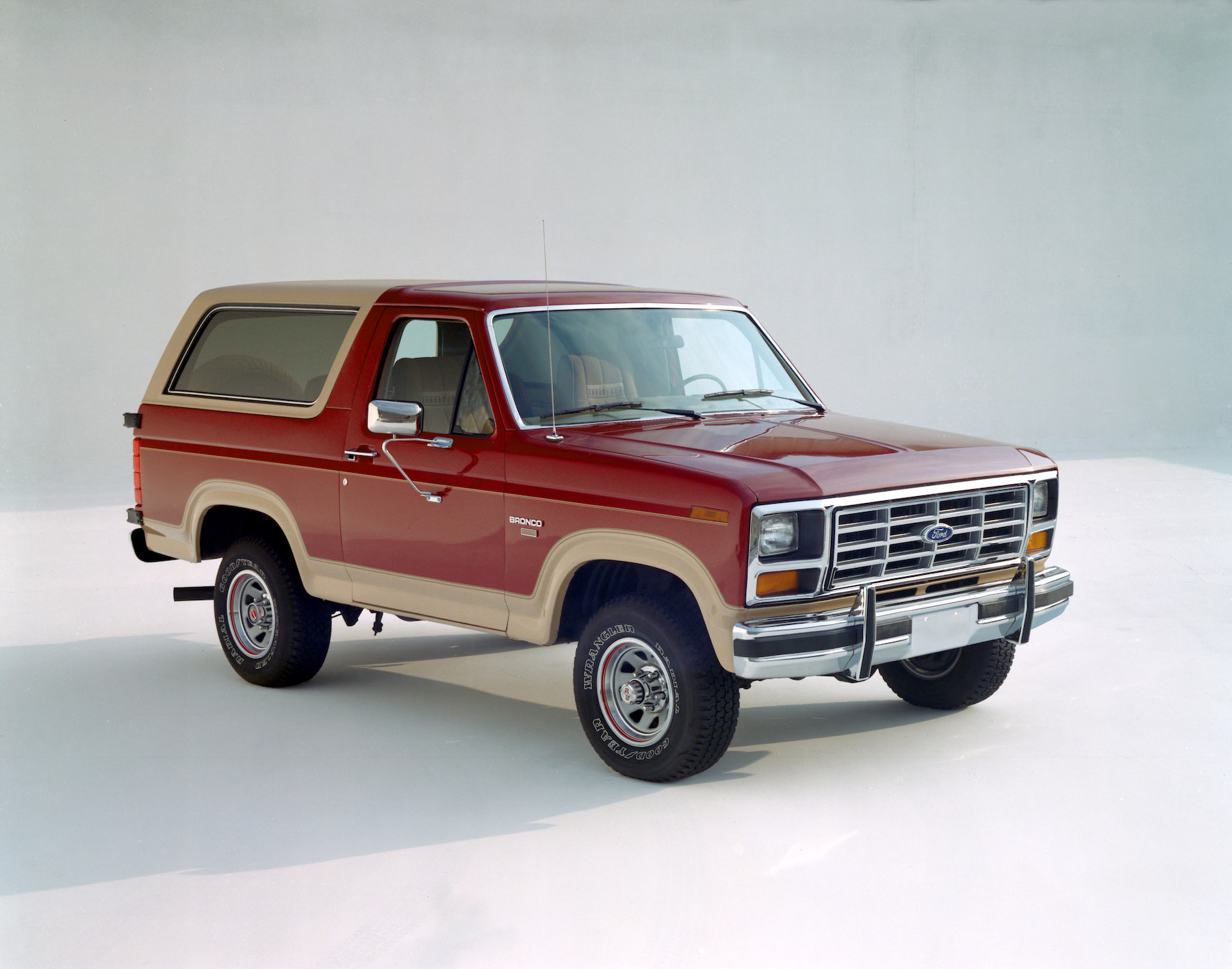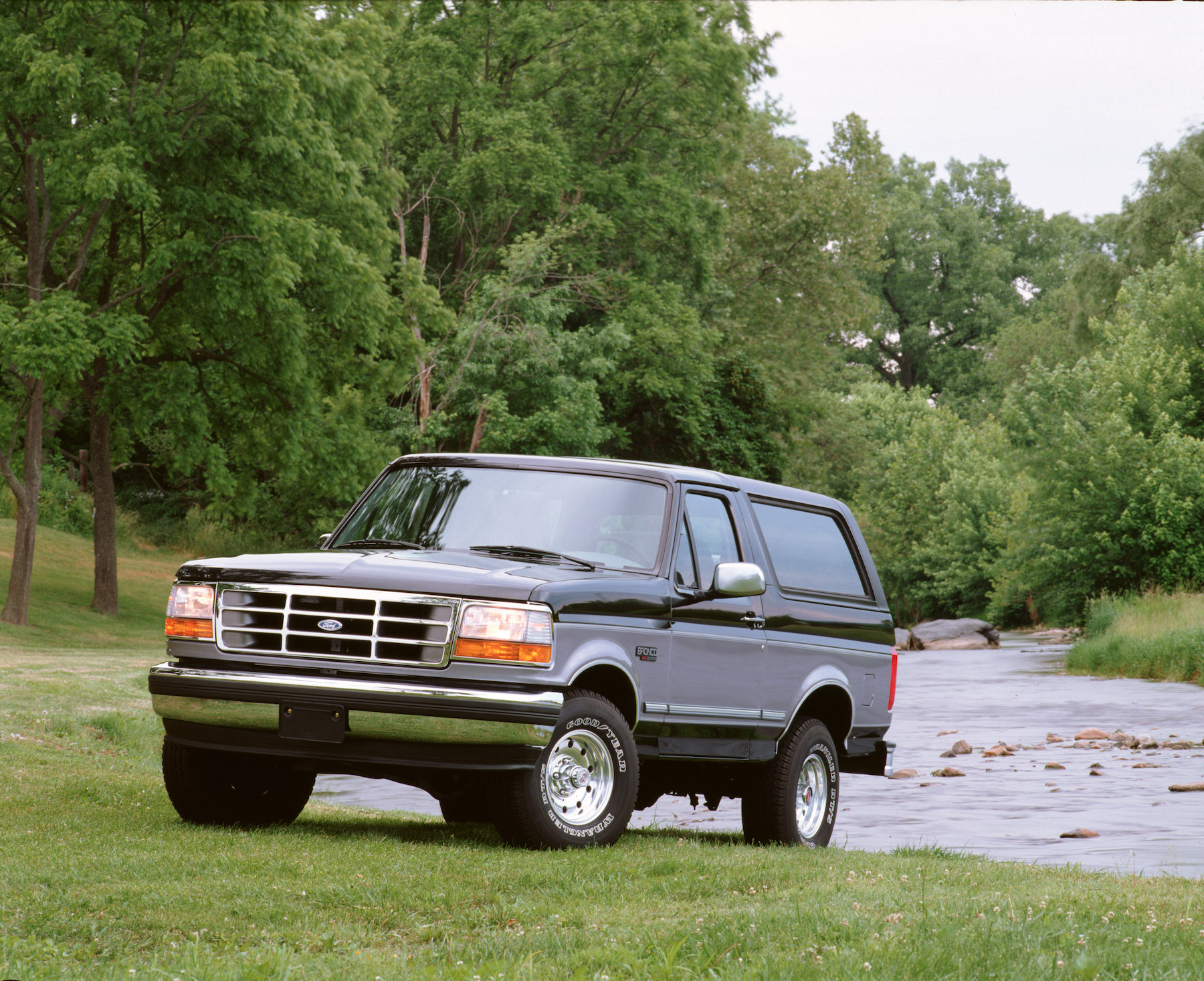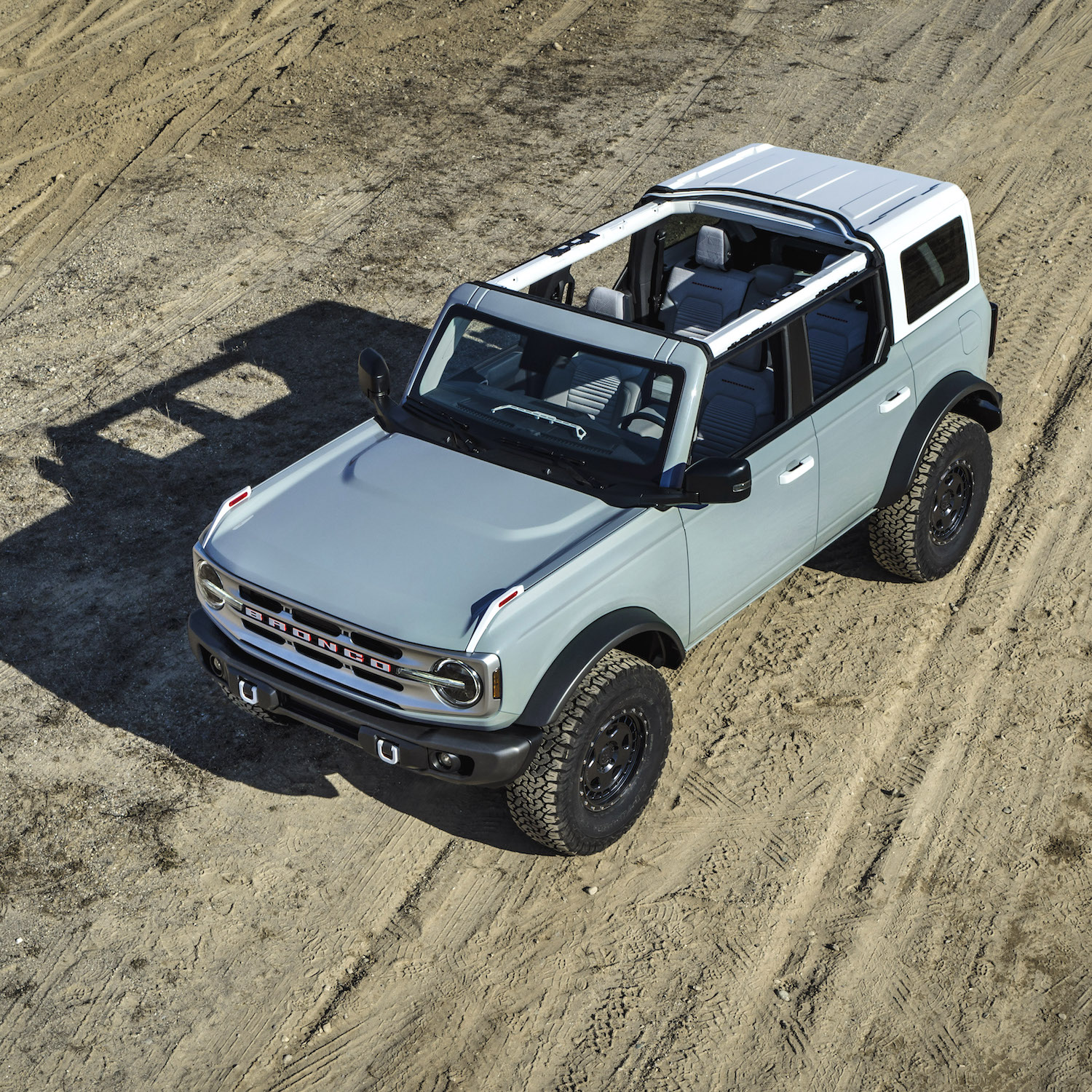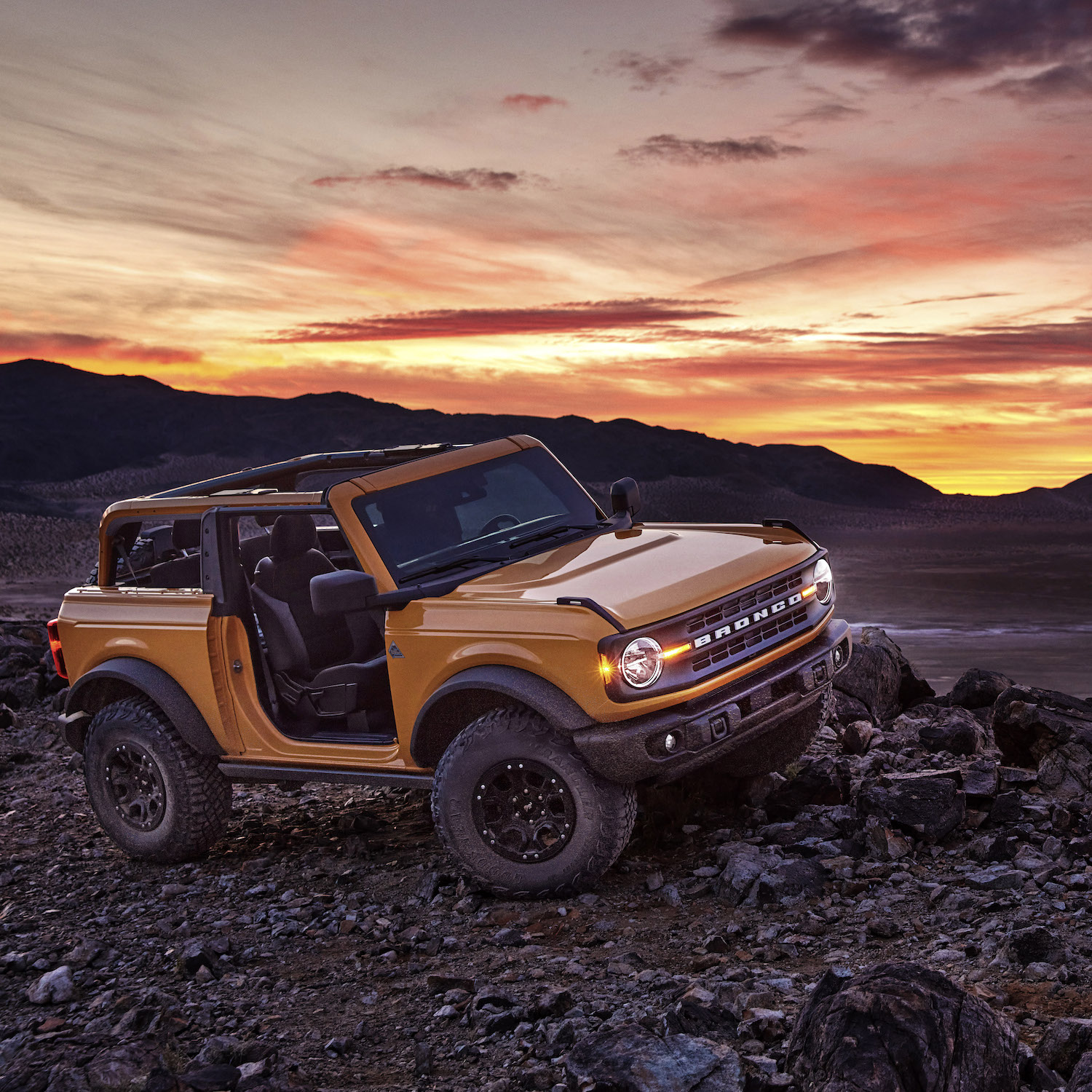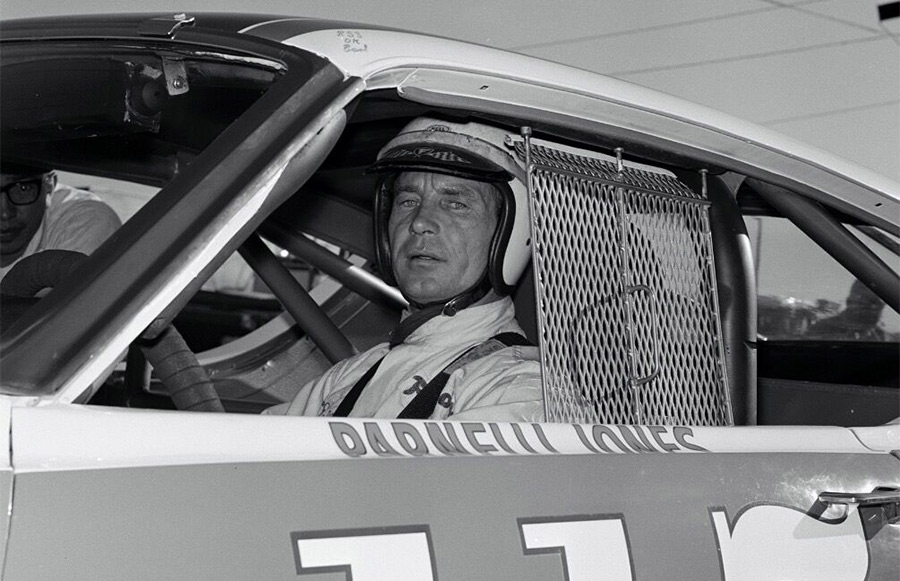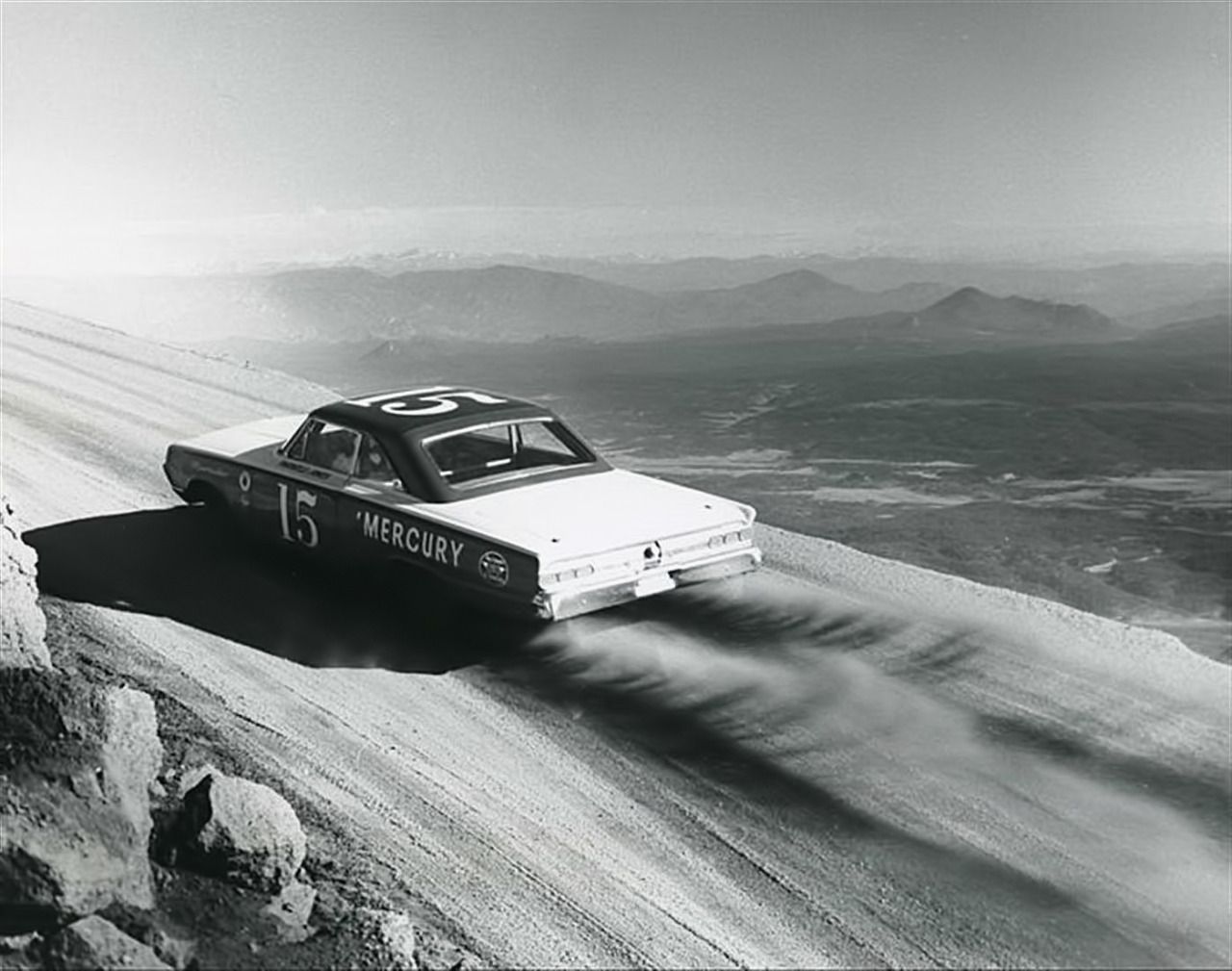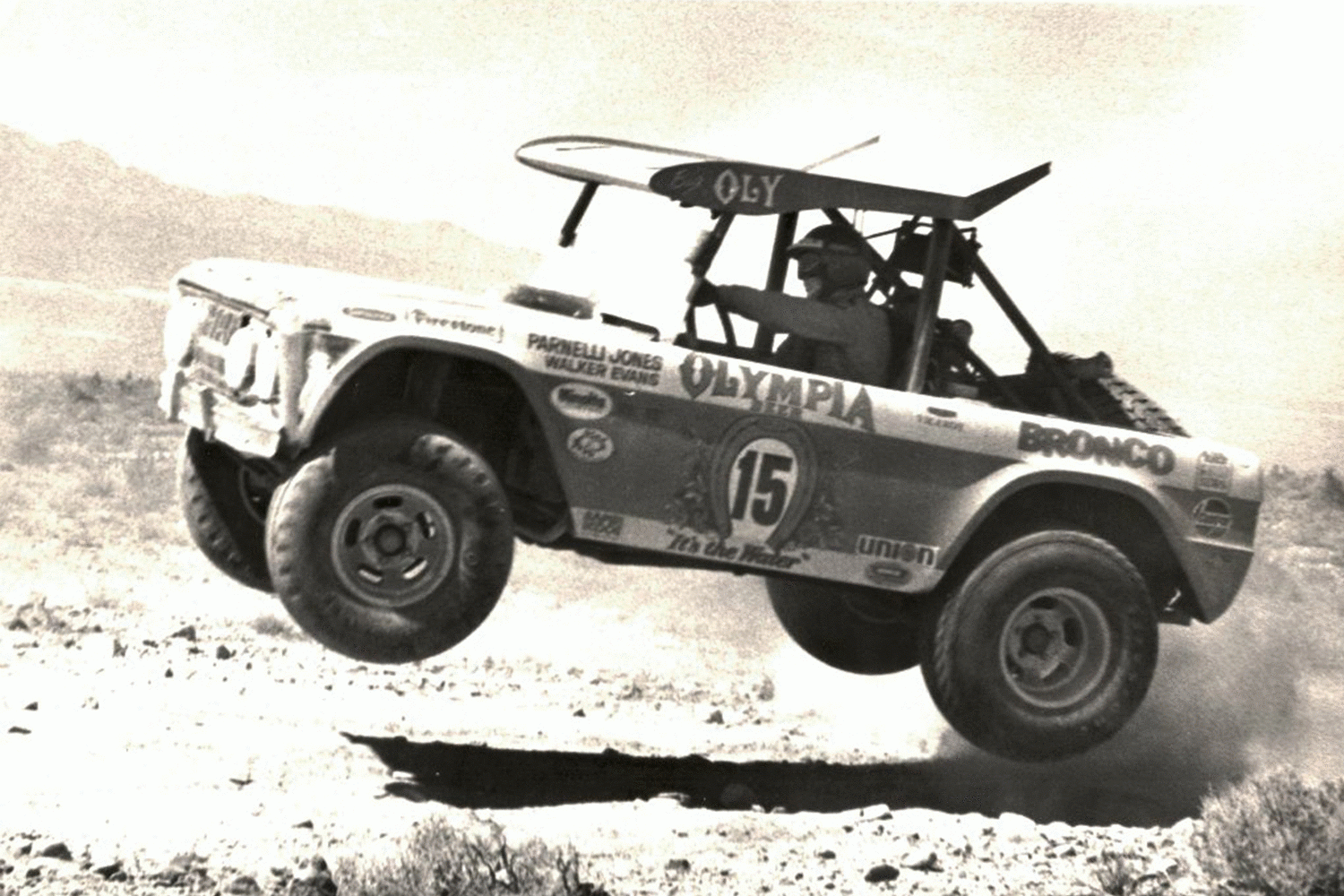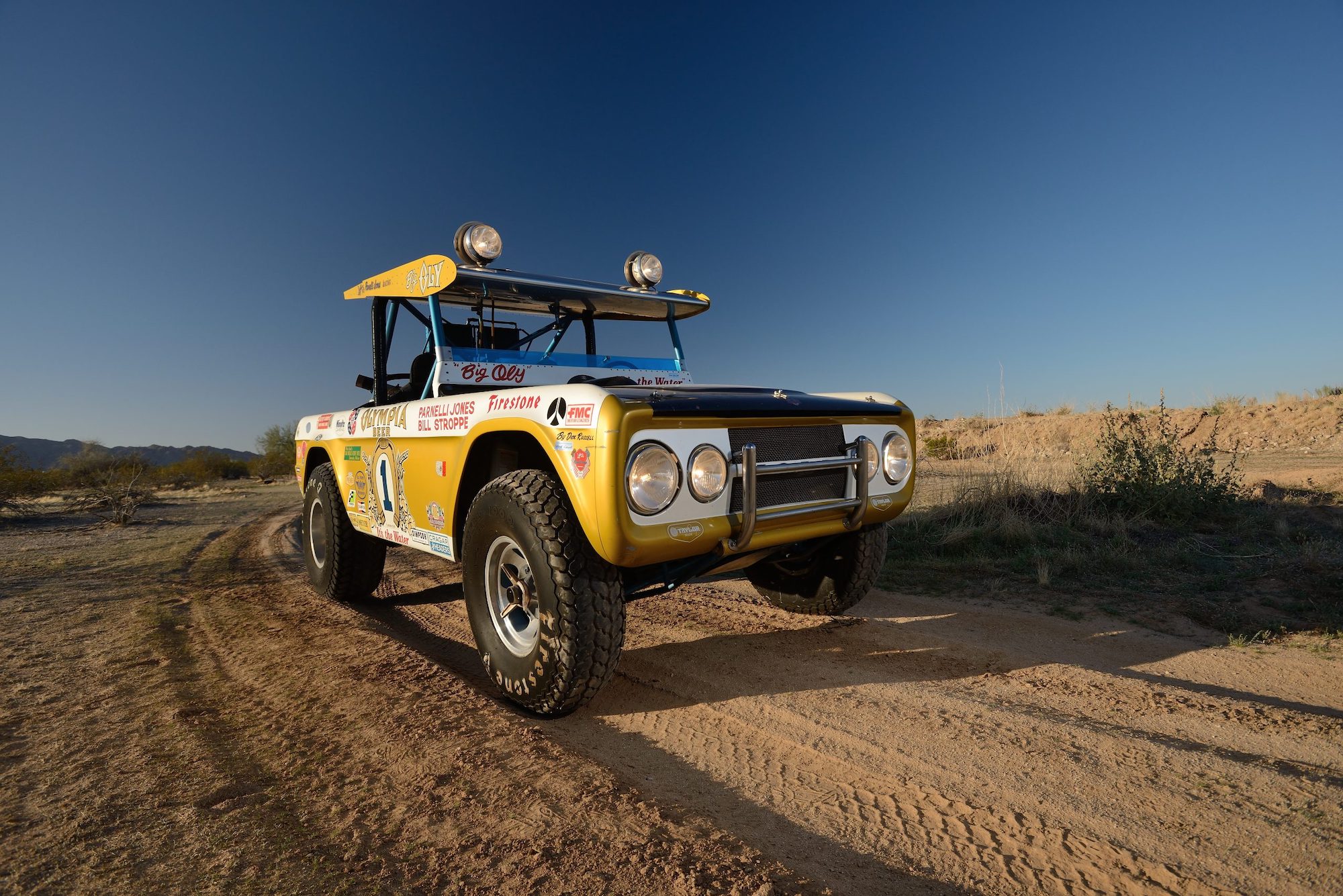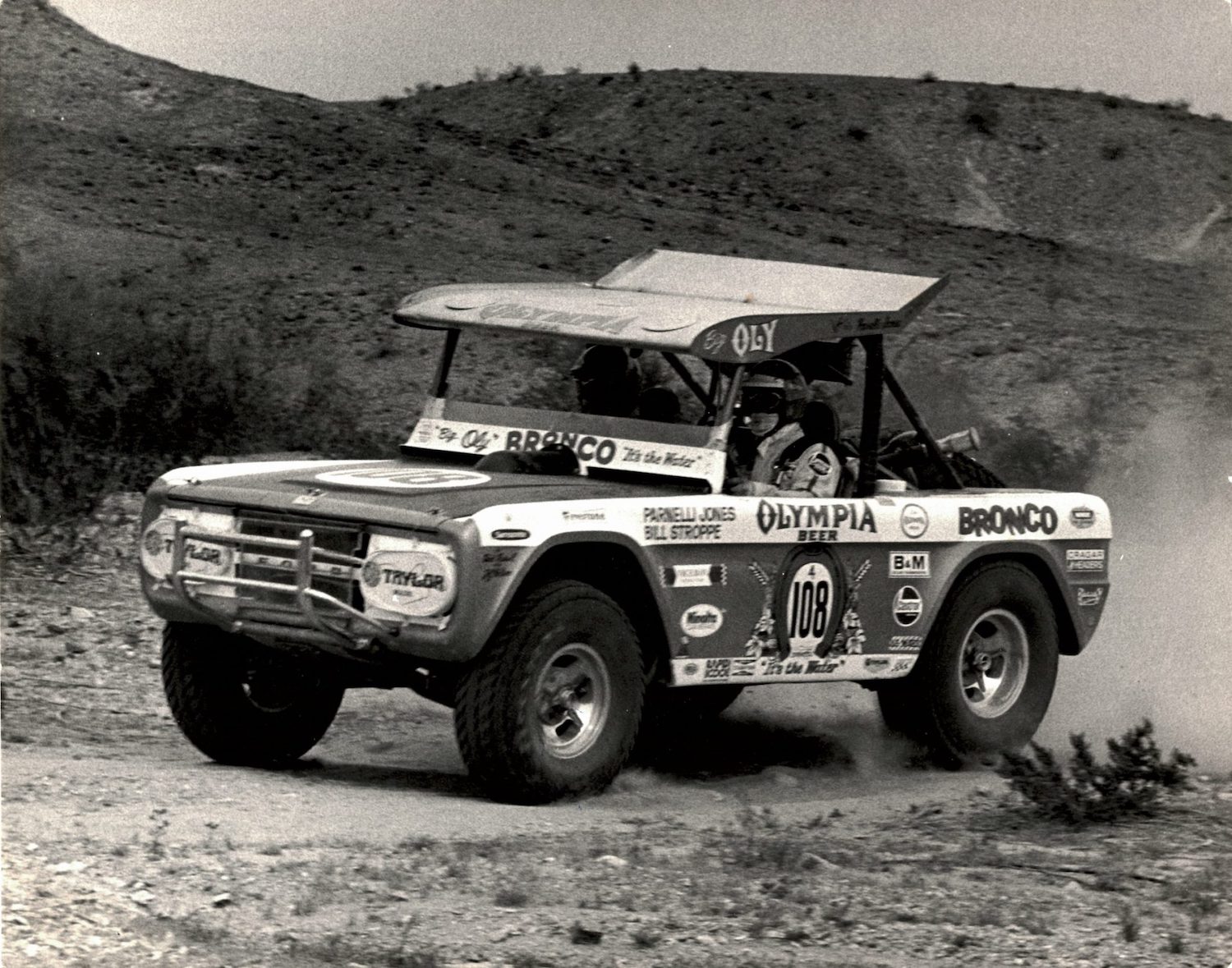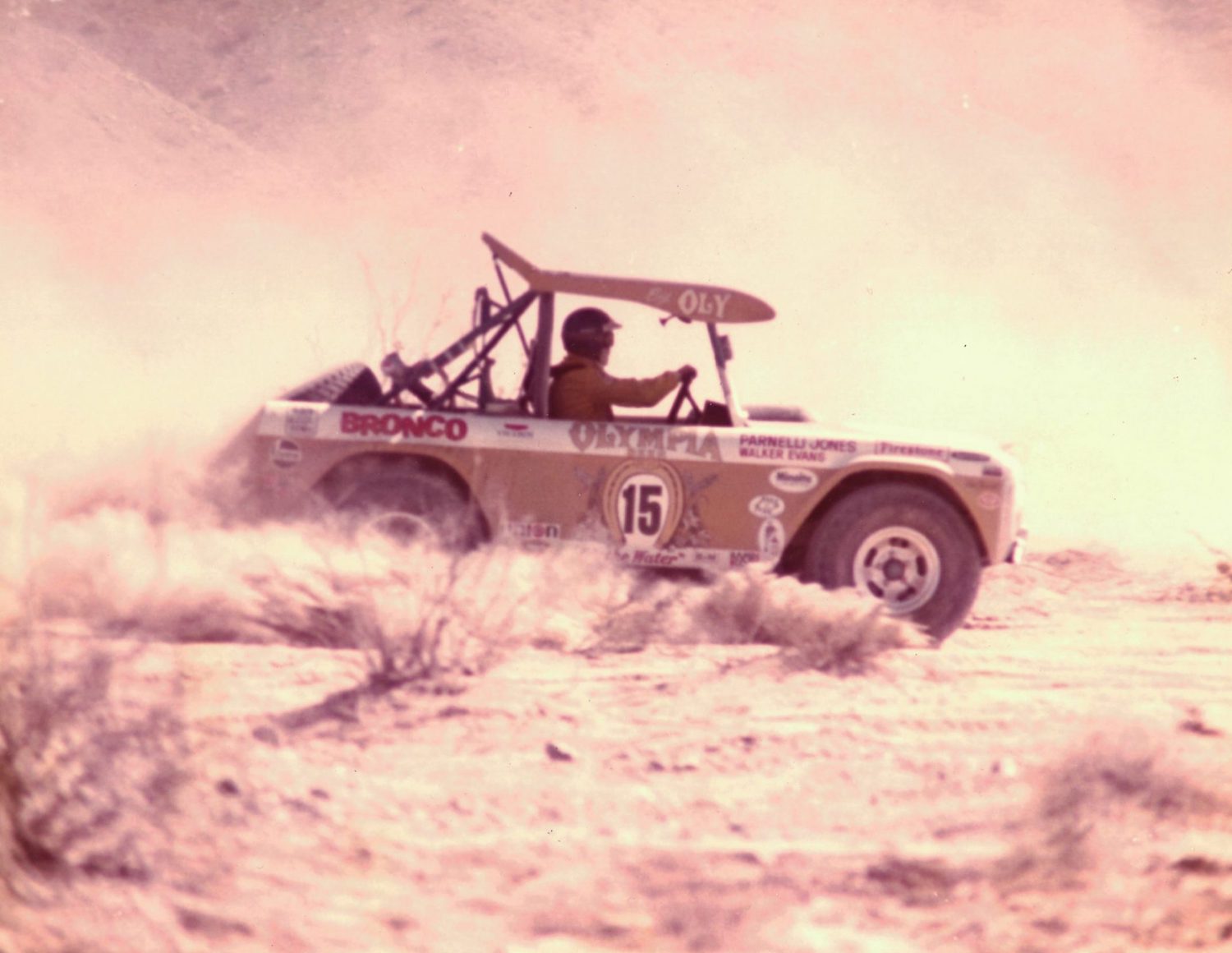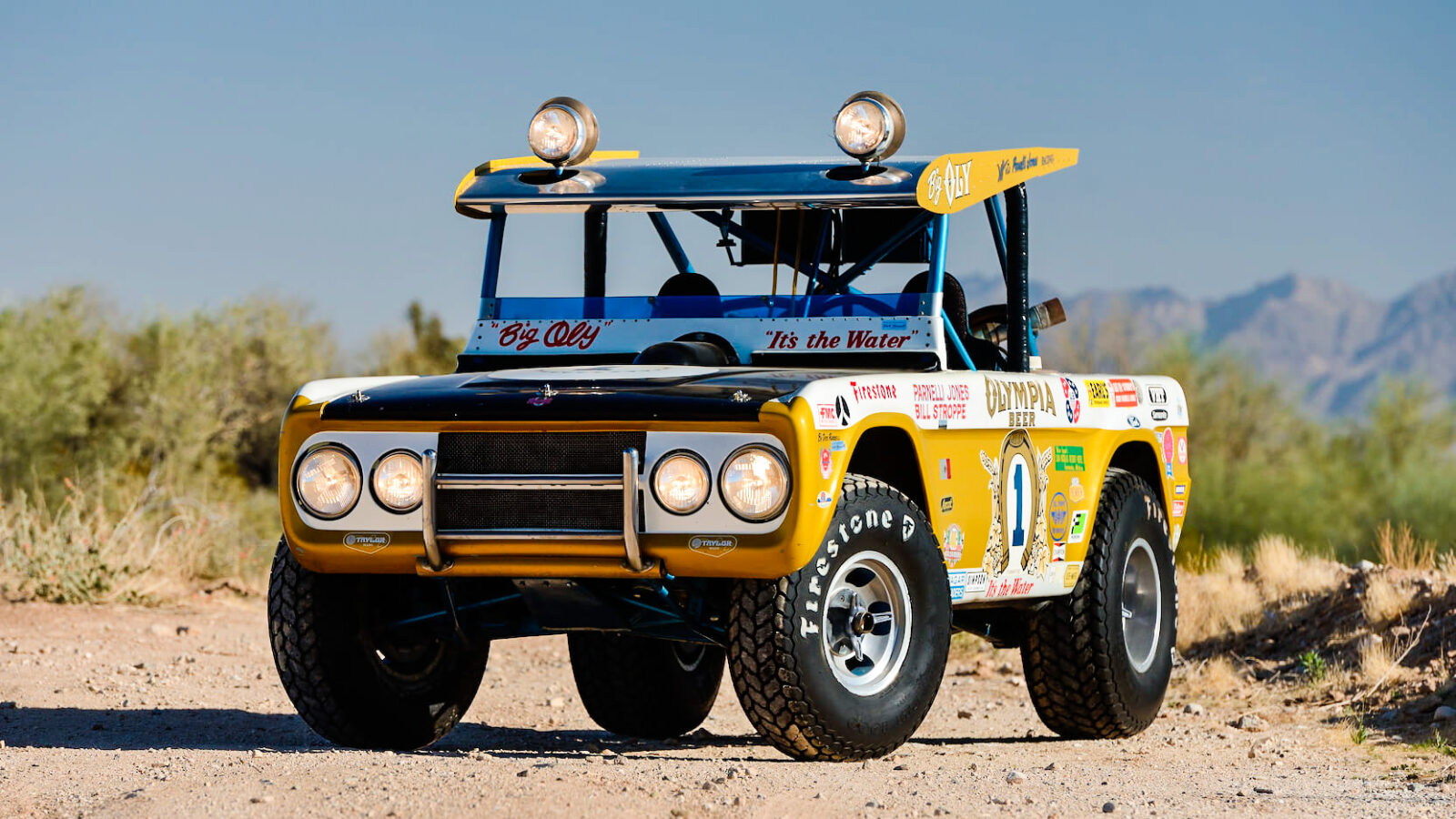The Possible Seven-Figure Ford “Big Oly” Bronco
One of the most badass American trucks soon for auction.
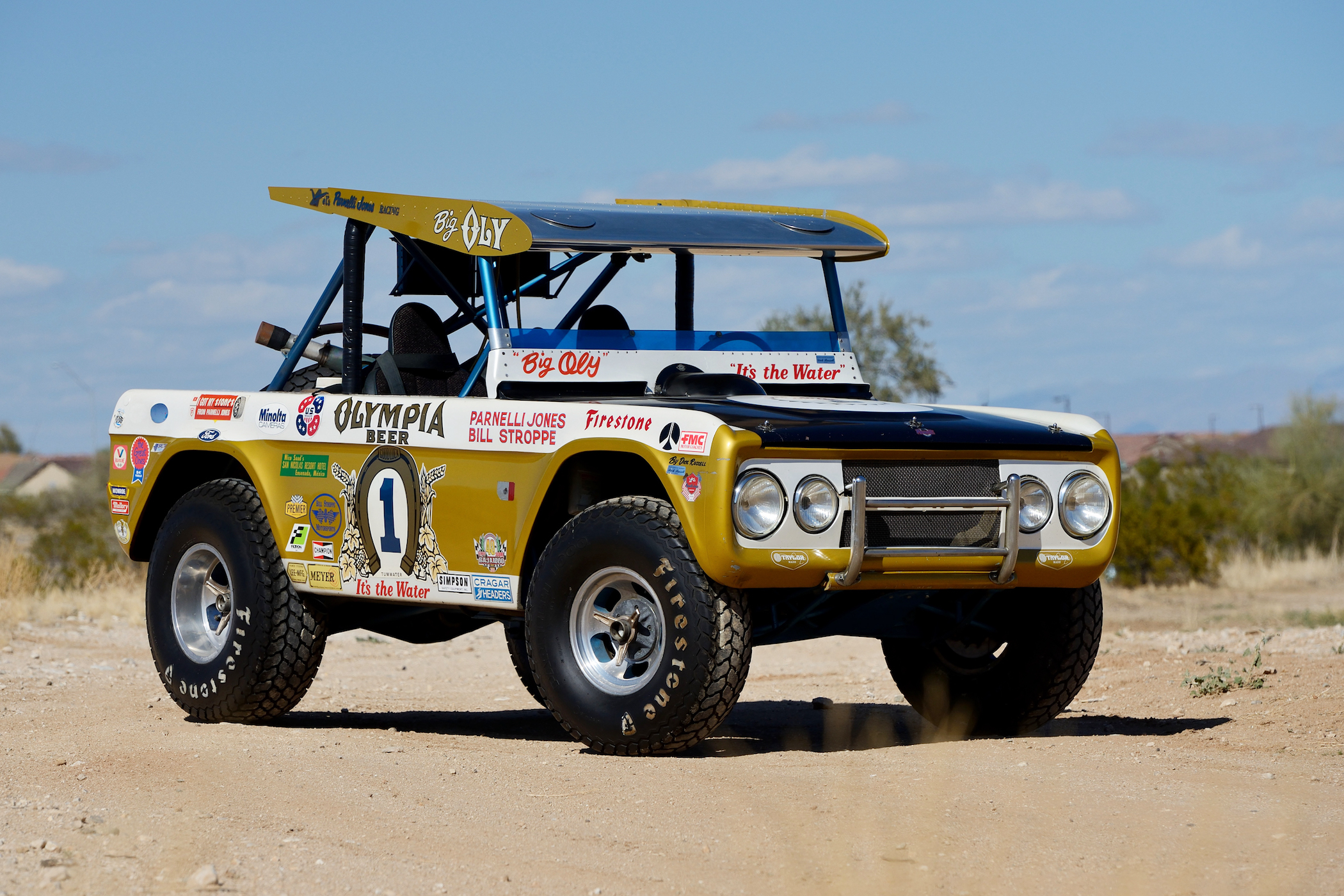
Ford has been teasing us with a new Bronco for many years and have finally introduced it in 2019. It went on sale in 2020 and demand was high. It’s a big, luxury truck you can pretty much thrash around in and customize extensively, as with most American trucks. There’s one specific Bronco, however, that is rather special, has a unique reputation (and look!) and is coming up for auction. People are speculating it will hit a seven-figure hammer price, unheard of for a vintage off-roader by Ford. Let’s dig a little deeper!
There’s just something cool about a big, brutish truck. Whether it’s kind of a “Boys and their Toys” thing, I don’t know, but seeing something special like the ‘Big Oly” Bronco really gets me going. This story has a few chapters, it needs a bit of explaining to just understand how special this vehicle is.
The Ford Bronco
It all starts in 1965 when Ford introduced the Bronco as their new compact off-road vehicle directly competing with the Jeep CJ5, the International Harvester Scout and the Toyota Landcruiser. The man responsible for the Bronco, Donald N. Frey, is the same guy who convinced Ford of the potential of the Mustang, to fight the Corvette as the ultimate American Sportscar.
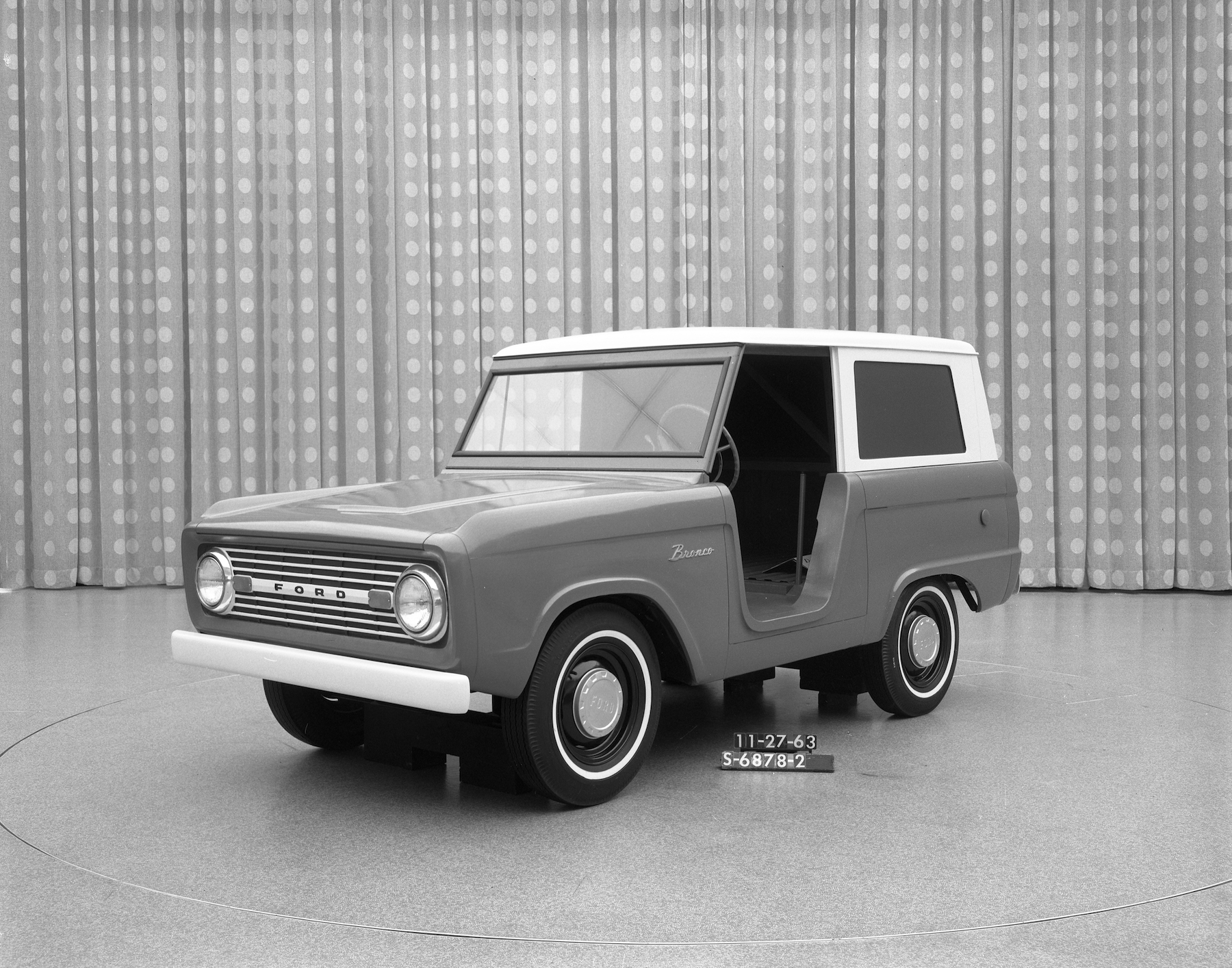
The first generation Ford Bronco was a boxy-looking car, as were most off-road vehicles and SUVs of the time. Initially released with an inline-six, producing a little over 100hp, a V8 was added to the Bronco in 1966 which produced double the amount of power. Drive would always go to all four wheels, regardless of what type of Bronco you bought.

The Bronco wasn’t built as a luxury vehicle, and as a direct result of cost-efficiency, the body was squared as much as it could. The bumpers were straight, the body was straight and the glass was flat, all in an effort to keep costs of tooling and stamping down to a minimum. Using the same chassis, three different bodies were introduced; the 2-door wagon, the half-cab pick-up and the open-top roadster. Despite the differences in the cab and bed section, the rest of the car was exactly the same.

These early generation Bronco’s are now considered classics and demand ever increasing prices for those looking to buy one. Similar to the International Harvester Scout, it’s a perfect vintage truck to enjoy. Simple, robust, and quite honestly rather cool! You have plenty of options to restore or build one considering the huge custom built market in the US, so there’s virtually no limitation.
The Bronco was in production from 1965 until 1996 and was eventually discontinued due to failing sales results. Throughout that lifespan, 5 generations of Bronco’s have been built and the last generation brought forth a rather (in)famous one. A white 1993 Ford Bronco XLT being driven by American Football superstar O.J. Simpson was chased by police after they believed he murdered his ex-wife and a friend of hers. Over 95 million Americans witnessed the chase on national television.
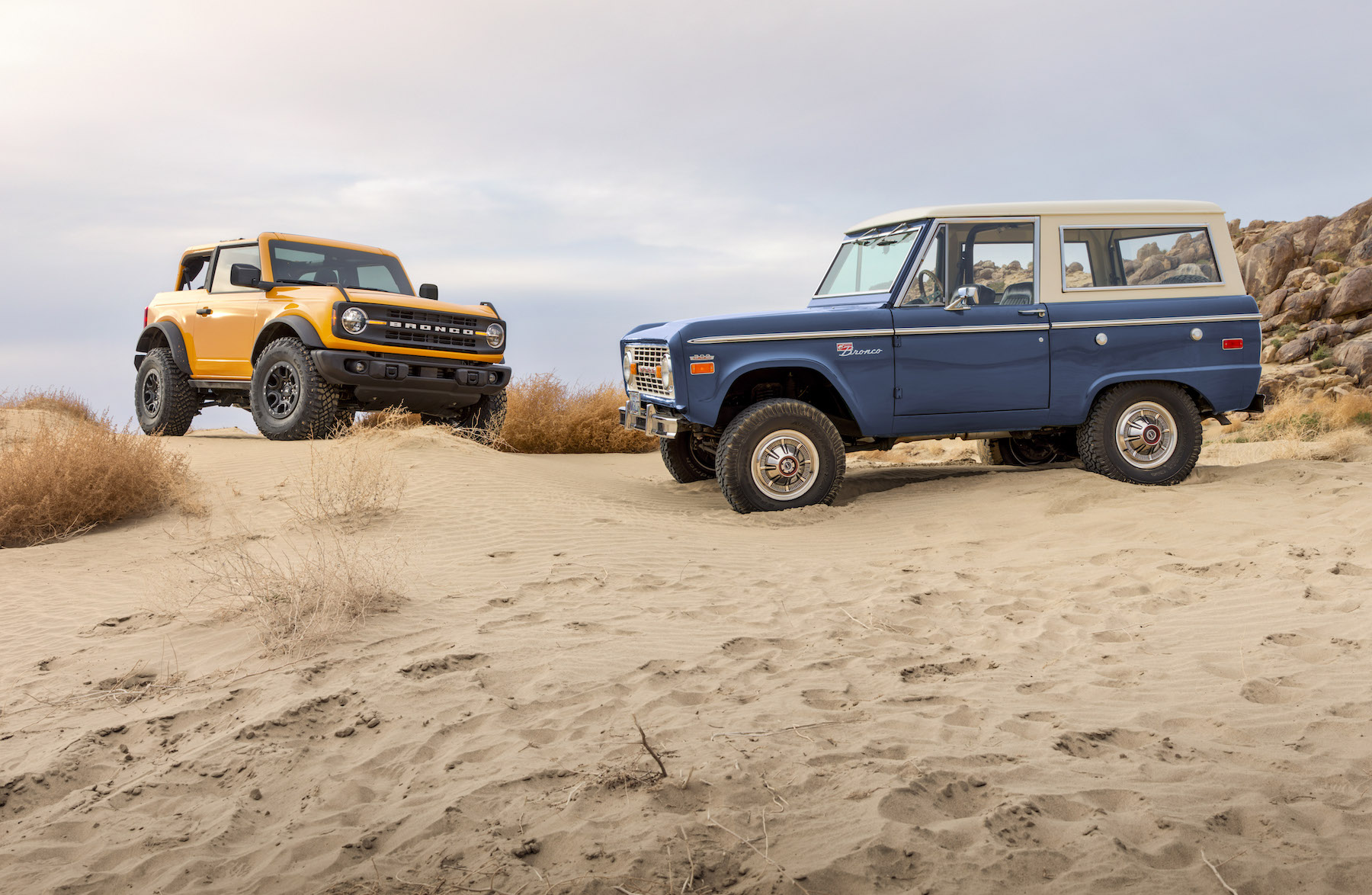
In 2020 Ford revealed the sixth generation of the Bronco, a long-awaited return as a luxury off-road SUV. After several delays, including an unintentional reveal planned on O.J. Simpson’s birthday (July 9th) the car was finally shown to the public on July 13th as a 2021 model.
The new Ford Bronco would become quite a success after many speculations and an extensive teasing campaign by Ford. A lot of interested buyers would make down payments, only to be disappointed with further delays, mostly down to the global Covid-19 pandemic. Intended as a homage to the original, the 2021 Ford Bronco looks like a very retro truck. It’s big, it’s still square(-ish) and it has all the styling elements the original is laureled for. Perhaps it could be best compared to the Land Rover Defender, in concept between the old and new at least.
Car and Driver has the full story on the 2021 Ford Bronco, including images of both the 2-door and 4-door versions.
Parnelli Jones
The name Parnelli Jones might not be all too familiar for Europeans but he is a legendary racing driver in the United States. He pretty much raced everything he could get his hands on and to great success. Rufus Parnell “Parnelli” Jones was born in 1933 and throughout his career, he won just about everything he did. Although he is outclassed by some drivers in terms of championships, wining virtually in every class you compete in is impressive, to say the least. At the same time setting new records while you’re at it, pretty much makes you a legend.
Parnelli Jones, as he is most commonly known, competed in sports cars, stock cars, sprint cars (VERY powerful cars famous for going VERY sideways on dirt ovals), IndyCars and off-roader racing like Pikes Peak. He was the first driver to qualify for pole position at an average speed of over 150mph (241kph) for the 1962 Indy 500 following his rookie debut in 1961. A year later he would be victorious in the Indy 500 race. Racing a total of six times only, he retired from IndyCars after driving the 1967 STP-Saxton Turbine car, which we included in our Turbine Power stories before.
The Pikes Peak International Hillclimb event is one of the best-known off-road races. It is a point-A to point-B timed event, racing up to the top of the mountain and whoever sets the fastest time, wins. Parnelli Jones, then driving for fellow-Ford guy bill Stroppe, won 8 races in the USAC Stock Car Championship, including the 1963 and 1964 Pikes Peak editions. Claiming to be fed up with “eating dirt”, Parnelli turned down Bill’s invitation to compete in the Mexican 1000, now the Baja 1000. Claiming Parnelli Jones wasn’t man enough, Bill Stroppe triggered something with Jones, who was livid.
Bill Stroppe’s plan worked and Parnelli Jones told him to prepare a car, which would be a race-prepped but almost stock Ford Bronco. The pair entered in the 1968 Mint 400, a 400-mile desert race in Las Vegas, Nevada. After crashing the car, sheering off both front wheels and suspension, the team had to retire.
Undeterred by this, Parnelli Jones and Bill Stroppe set out to build another Bronco. This time it would a 2-wheel drive truck built for the 1970 Baja 500. The Baja 500 is a legendary off-road desert race held in New Mexico over a 500-mile course. It’s big brother, the Baja 1000 is double the distance and arguably one of the greatest challenges in off-road racing. Both are rounds in an annual four-race series of events.
The success of the two-wheeled Bronco, still a mostly stock machine, fueled Parnelli Jones’ idea to build a racing truck from the ground up. He used his ideas and experience from other races to build something that would help him win. Well, not just win, but destroy the competition. And that very truck would become one of the most iconic off-roaders ever made, changing the principles for off-road racing forever.
More on Parnelli Jones’ entire racing career here.
The “Big Oly” Bronco
“Big Oly.” That’s the name given to the Ford Bronco that Bill Stroppe and Parnelli Jones built. Its nickname is derived from the main sponsor, the Olympia Brewing Company. From the outside, it might look like an everyday 1966 Ford Bronco, but it is a far cry from the one people could buy at the dealership.
It was built on a bespoke tubular chassis with aluminium panels and a fibreglass body. The 390bhp V8 engine was pushed back into the cab for better weight distribution. Using experiences from Indy Car racing, it had an upswept windshield working as an air-dam to prevent dirt from entering the cab. Other innovations included a cab-mounted air filter for the engine, a built-in thermos drinking system and a backlit rolling roadmap detailing the entire course. A heavily modified suspension system meant they could tackle the roughest terrain possible at the highest speeds possible. Last but not least an adjustable wing was mounted on top of the roll-cage, as the roof basically, to help with the stability of the truck and keep it planted at high speeds. For night-time racing, the roof/wing also included retractable high-beam lights.
Entered in the 1970 Mexican 1000, the Baja’s predecessor, a broken axle meant another retirement. A year later, the duo in the Big Oly Bronco proved unbeatable and set a new course record which was well over an hour faster than the previous record. It would compete again in 1972, repeating the results from a year prior and would also win the Baja 500 and Mint 400 events in 1973 before eventually withdrawn from racing in 1975.
Here’s the man himself, talking about driving the Big Oly Bronco:
The car was never sold off or butchered for parts, and remains in possession of Parnelli Jones, as he couldn’t part with such an important piece of his racing career and racing history in general. To this day the car is regularly shown at events but has remained in his personal collection since its retirement. The car is still in original, working condition and is pretty much as-raced as it can be. All this will pretty much guarantee a hammer price of over a million USD when it is auctioned off.
Yes, that’s correct. This car will come up for auction. After over 50 years of ownership, Mecum Auctions will include it in their Indy 2021 Auction week, running from May 14th to 22nd. Although there’s an extensive list of rare, iconic and special vehicles on offer, this is undoubtedly the star of the show.
All details for lot R254 from Mecum Auctions are here, including a fascinating story on a refuelling incident in the 1970 Baja 1000. Hagerty also shares plenty of details on the ‘Big Oly’ Bronco.
Photos by Ford and Mecum Auctions.


